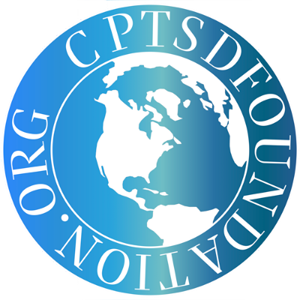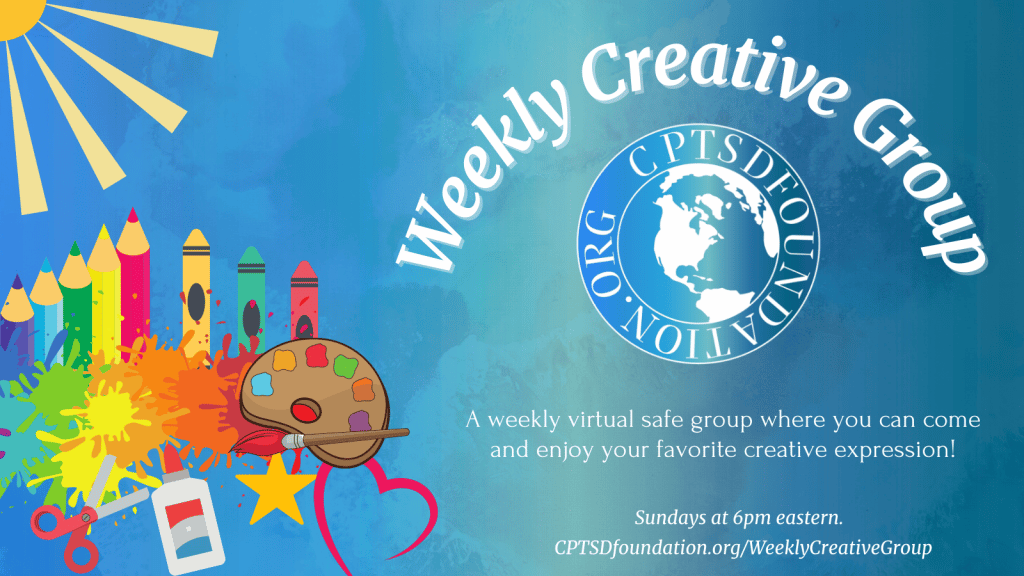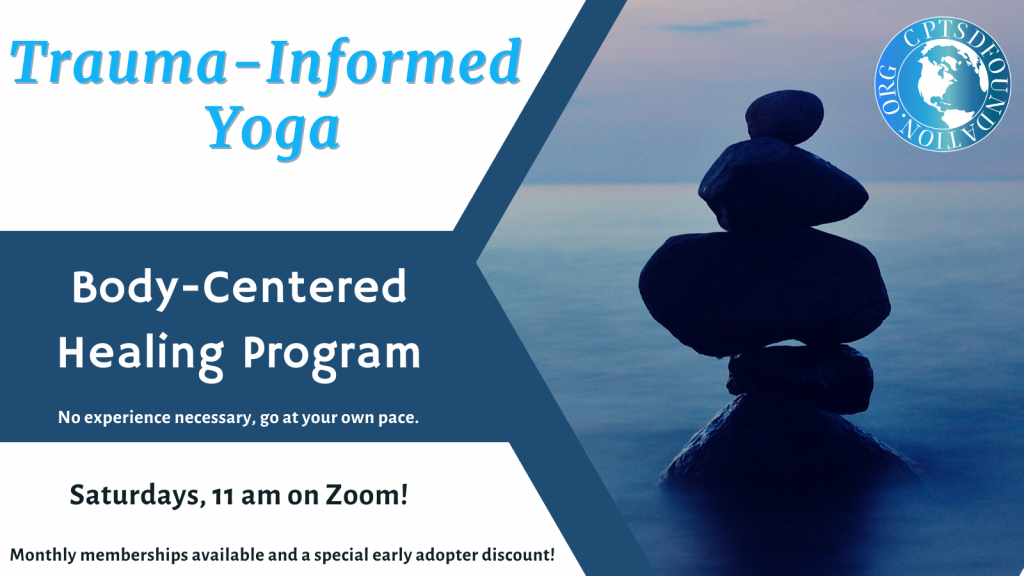May is Mental Health Awareness Month, so I am posting a series of articles about the mental health disorders that dominate my daily life: complex post-traumatic stress disorder (C-PTSD) and Premenstrual Dysphoric Disorder (PMDD). First and foremost, I share my experiences to help others feel less alone. I also hope nonprofit leaders and other employers read these stories and take the steps necessary to create inclusive environments for those with serious mental health conditions.
What is Complex PTSD?
C-PTSD stands for complex post-traumatic stress disorder. Most people are more familiar with PTSD, which is often associated with veterans or victims of violent attacks. So what’s the difference between the two?
According to the National Institute for Mental Health, “Post-traumatic stress disorder (PTSD) is a disorder that develops in some people who have experienced a shocking, scary, or dangerous event.” While PTSD refers to a single traumatic event, those with C-PTSD have experienced multiple traumatic events. The traumatic events they have experienced are interpersonal, meaning that other people cause them. The events also occurred in environments that were nearly, if not entirely, impossible to leave. Those at risk for C-PTSD include:
- Victims of child abuse and neglect
- People who have experienced domestic violence
- Those living in war zones
C-PTSD symptoms are the same as PTSD, like flashbacks and insomnia, but also include:
- Emotional dysregulation, meaning that it is difficult to identify and manage emotions
- Feelings of worthlessness and shame. To borrow from psychologist Pete Walker, people with C-PTSD tend to think of themselves as “fatally flawed.”
- Trouble establishing and maintaining relationships with other people
I struggle with C-PTSD symptoms every single day due to the emotional abuse and neglect I experienced as a child. However, I’ve managed to fly under the radar professionally. I have two Master’s degrees, over 15 years of experience as a data analyst for nonprofits, and run my own business. How? Because my symptoms and coping mechanisms fall under the “socially acceptable” end of the spectrum. But just because they are socially acceptable doesn’t mean that they haven’t caused harm to me and those around me, as the examples below will show.
#1: Self-sufficiency
I am a fiercely independent worker. If someone gives me a task or project, I will do it well, finish it on time, and make everyone happy. Even when I worked in teams, I tended to be the one person with data analysis experience, so I still worked independently despite being in a group.
On paper, this is a great trait to have. How many job openings have you seen looking for independent workers? Tons! Self-sufficient workers are the ones you don’t have to worry about. And for many people with C-PTSD, learning self-sufficiency was how we survived. Once you realize the adults around you cannot care for you, you need to figure out how to care for yourself.
The flip side is how hard it is to ask for help. Sometimes, asking someone for assistance never crosses my mind, even if I’ve completely hit the wall on a task or project. On my worst days, I become dysregulated, meaning that my frustrations, anxiety, and anger will take over me. Of course, I don’t let anyone see that this is happening – I usually keep the storm to myself. But that’s a recipe for resentment, which isn’t the best way to show up to work every day.
#2: Perfectionism
For those of us who grew up with emotional abuse and neglect, the experience can trick us into thinking that love must be earned. When abused kids grow up, some of us end up believing that the perfect GPA, job, work product, whatever, will finally make our caretakers treat us like human beings. And if we are not doing everything perfectly all the time, we’ll be subject to the rejection we received growing up.
Employers love a hard worker who constantly gives 110%, and good work is often rewarded – to a point. However, perfectionism can easily lead to burnout, especially if that positive feedback doesn’t result in anything tangible besides more work. With therapy, I’ve gotten better at creating realistic expectations for myself and understanding that I’m allowed to make mistakes. However, if you’re a client of mine (hi!), I’m sure you’ve gotten deliverables from me that are more exhaustive than you needed or wanted (sorry). That’s the perfectionism at play – if I don’t give you everything I can think of, I’m worried you won’t work with me again.
#3: An extremely high pain tolerance
Nonprofits may be exempt from taxes, but they’re not exempt from creating dysfunctional work environments. I’ve heard plenty of stories of managers and leaders who place their egos over the mission, take advantage of employees, or have no idea what’s happening in their organization. For healthier people, being in a problematic work environment is too much to deal with, and they leave for something better. For me, it’s just a Tuesday.
When you grow up in environments with lots of toxic behavior, it’s hard to identify the same behavior as problematic once you’re out in the working world. For a long time, I assumed I was adaptable, another trait employers love. Once I started therapy, though, it was easier for me to recognize problematic work behavior, establish boundaries, and create a healthier environment for myself.
What has helped
The top actions I’ve taken to manage my C-PTSD are:
- Working with trauma-informed therapists
- Medications (shoutout to Cymbalta!)
- Dark humor
- Working for myself
- Being open and honest about my experiences
There are a ton of privileges wrapped up in being able to access therapy and medications, as well as being able to work for myself (the dark humor was free!). I also know that being open and honest about my C-PTSD is a risk for my business. But despite everything, I know I am good at what I do, and my work has been valuable to the organizations I’ve worked with. My life experiences have also made me highly empathetic, understanding, and curious, which is invaluable in my line of work. If my diagnosis makes potential clients uncomfortable, we probably aren’t a good match, anyway.
If you’re reading this and see yourself in this story, I want you to know you’re not alone. Trying to hold a job, maintain relationships, and just be a person in the world with this kind of relational trauma is hard as hell. But it’s possible, and I see you, and hopefully, this piece will help others see you, too.
Resources:
- Complex PTSD – From Surviving to Thriving by Pete Walker
- Adult Children of Emotionally Immature Parents by Lindsay C Gibson
- CPTSD Foundation
- Adult Children of Alcoholics and Dysfunctional Families (recovery group)
- Psychology Today Therapist search
Photo by Sebastian Mark on Unsplash
Guest Post Disclaimer: Any and all information shared in this guest blog post is intended for educational and informational purposes only. Nothing in this blog post, nor any content on CPTSDfoundation.org, is a supplement for or supersedes the relationship and direction of your medical or mental health providers. Thoughts, ideas, or opinions expressed by the writer of this guest blog post do not necessarily reflect those of CPTSD Foundation. For more information, see our Privacy Policy and Full Disclaimer.
Lynsey P. Caviello (she/her) writes about navigating life with multiple mental health disorders, including complex post-traumatic stress disorder. You can find her writing here on the C-PTSD Foundation blog and on Vocal. She can be reached at [email protected].





I absolutely relate to your article. Thank you for your honesty and message of hope. I feel seen.
Hi Debbie, thank you so much for your kind words. I’m so glad you found the post helpful.
Hi Lindsay, Thank you for sharing and you outlined some of my greatest strengths. What I only saw as a molehill, my therapist has described as mountains. Resilient, adaptable, and seeing the world through hearts and rainbows also traits honed to a razor’s edge with decades of training at the hands of others. I have done work with IFS and one of my protectors I named, “Under the Radar Man”. Keep up your work and reaching out and helping others. All the best.
Hi Dave, thank you for your kind words and for sharing your experiences. I appreciate it.
Great article Lindsay, Ty. Any particular therapy? Having difficulty getting out from under all my stories as if drowning in my grief for what I’ve lost and haven’t lived. It’s not cathartic at this point. May try NARM as dbt and cbt not really helping at this point. Ty again.
Hi Linda, thank you for your comment. I’m not a therapist or someone with any kind of professional mental health training, so I’m not an expert on the best therapeutic models. One therapist I know uses Internal Family Systems and recommended “Introduction to the Internal Family Systems Model,” by Richard Shapiro as a place to start. Some of the language reminds me of Adult Children of Alcoholics and Dysfunctional Families, if you’re familiar with that (www.adultchildren.org). Hope this helps!